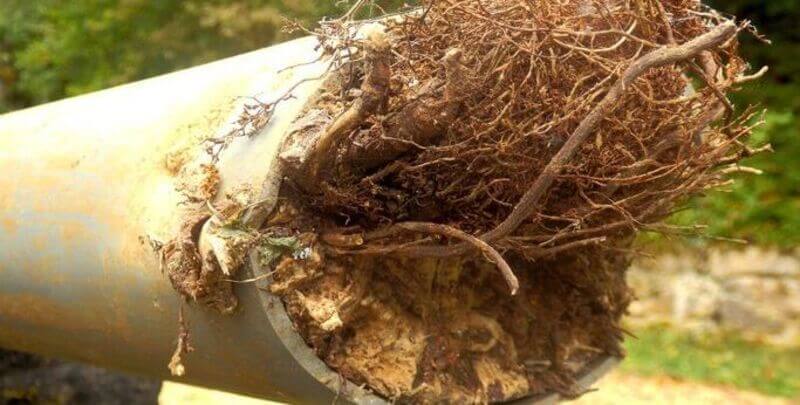
Tree Roots: The Most Common Cause of Blocked Stormwater Drains
Stormwater drains are crucial in managing excess rainwater, preventing flooding, and safeguarding our communities. Despite their importance, these drainage systems often face a persistent threat − drain blockages.
One of the most common and insidious causes behind these stormwater drain blockages is the invasion of tree roots into the stormwater system.
Dive into the world beneath our feet as we unravel the common culprit behind blocked stormwater drains: tree roots. Uncover the challenges, prevention strategies, and solutions in our concise guide to maintaining a free-flowing drainage system.
As we delve into this issue, it becomes evident that understanding how tree roots infiltrate stormwater drains is pivotal in devising practical solutions.
How Tree Roots Invade Stormwater Drains
Why do tree roots find their way into our stormwater drains? Here are the main reasons:
- The search for water: Tree roots are nature’s seekers of sustenance, and the water table is a prime target. When trees sense water sources beneath the ground, their roots relentlessly search for boiling water. With their moisture-laden environment, stormwater drains become alluring destinations for these probing roots. The relentless quest for water leads the roots to infiltrate the stormwater drain and pipes, causing obstructions and impeding the natural flow of stormwater.
- Cracks and joints: An often-overlooked vulnerability lies in the cracks and joints of stormwater drain pipes. As tree roots grow, they exploit these openings, gradually infiltrating water and pooling the pipes. Regular maintenance is crucial to promptly identify and repair cracks, preventing roots from establishing a foothold within the rainwater drainage system. By addressing these weak points, homeowners can fortify their stormwater drains against root invasion.

Signs and Symptoms of Tree Root Blockages
How do you know tree roots have invaded your drainage system? Here are some of the tell-tale signs:
- Slow drainage: An obvious sign of tree root blockages in stormwater drains is a gradual decline in water flow and drainage efficiency. As roots grow within the pipes, they obstruct the natural flow of water, causing slow drainage. Homeowners should be vigilant for warning signs of this early indicator, as addressing the issue can prevent more severe damage and repairs.
- Unpleasant odours: The invasion of tree roots into stormwater drains leads to the accumulation of debris, creating a breeding ground for unpleasant odours. Foul smells emanating from stormwater drain pipe openings signal a severe stormwater drain blockage somewhere. Recognising and connecting these odours to potential root infiltration is essential for early detection and intervention.
- Unexplained wet spots: The presence of unexplained wet or soggy spots in the yard raises concerns about the integrity of underground pipes, particularly those associated with drainage and plumbing systems. These wet areas may be noticed in proximity to the location of underground pipes, suggesting a potential issue with water escaping from the intended pathways. The origin of these wet spots may be elusive, making it imperative to investigate promptly to prevent further damage and potential complications.
- Sinkholes: The formation of sinkholes or depressions in the yard is a tangible consequence of soil erosion, often attributed to tree root infiltration. Sinkholes represent a more advanced stage of damage, signifying that the roots have not only penetrated the soil but have also caused significant erosion and subsidence. The process typically starts with the origins infiltrating the soil, displacing it and creating voids underneath. Over time, the unsupported soil above these voids collapses, forming sinkholes or depressions.
- Cracks in the pavement: The appearance of cracks in sidewalks, driveways, or paved surfaces near a tree is a visible indication of potential root growth underneath. In their quest for moisture and nutrients, tree roots can exert substantial pressure on the surrounding soil and hardscape, leading to cracks in paved surfaces. This symptom often results from long-term root expansion and may not be immediately noticeable.
- Visible roots in the yard: The presence of visible tree roots above the ground clearly indicates potential underground intrusion. Tree roots that surface above the soil are a visual nuisance and suggest that the tree’s root system may be expanding aggressively, seeking nutrients and water. The appearance of visible roots is often a result of the tree’s adaptation to challenging soil conditions, and it signifies the need for attention to prevent further complications.
Prevention Techniques for Tree Root Blockages
Prevention is always better than cure, so how can we stop tree roots from invading stormwater drains in the first place? Here are some strategies:
- Selecting tree species wisely: Choosing trees with non-invasive root systems around stormwater pipes is fundamental in preventing root-related issues. Homeowners should opt for species with a reputation for developing compact and non-aggressive root structures that discharge water well. A comprehensive list of suitable and unsuitable tree species near stormwater pipes and drains provides valuable guidance for property owners.
- Regular maintenance practices: Proactive maintenance is key to preventing tree roots from infiltrating stormwater drains. Regular inspections, cleaning, and repairs help maintain the integrity of the stormwater drain cover and drainage system. Basic practices like clearing debris and ensuring proper grading help maintain the long-term health of stormwater drains, thereby reducing the risk of root blockages.
- Root barriers: Installing root barriers around stormwater pits is a physical deterrent to algae growth, preventing tree roots from reaching and infiltrating stormwater drains and pipes. Understanding how these barriers work and implementing proper installation and maintenance procedures can safeguard stormwater drains and gutters from invasive root systems.
- Visual inspections: Regular visual inspections of blocked stormwater pipes are a homeowner’s first defence against tree root blockages. By conducting simple inspections, individuals can identify visible masses of roots within the stormwater drains themselves. This proactive approach allows for early intervention, preventing extensive damage and ensuring the smooth functioning of stormwater drainage systems.

Professional Solutions for Tree Root Blockages
When dealing with tree roots infiltrating stormwater drains, it’s often necessary to enlist the expertise of professionals.
These specialists possess the knowledge, skills, and equipment to effectively address root-related blockages and restore the functionality of drainage systems.
Here’s how professionals can assist you in mitigating the impact of tree roots on stormwater drains:
- Hydro-jetting: Professional solutions such as hydro-jetting prove highly effective for more severe cases of tree root blockage. This method utilises high-pressure water to dislodge and flush out root masses from clogged drains, restoring the normal flow of stormwater. Homeowners can enlist the services of professionals to conduct thorough hydro-jetting, ensuring a comprehensive removal of roots and debris.
- Chemical treatments: Professionals may also utilise specialised chemical treatments to eliminate tree roots from stormwater drains. These treatments inhibit root growth and dissolve existing root masses in clogged drains, restoring water flow within the pipes. Professionals are well-versed in safely and adequately applying these chemicals, ensuring minimal environmental impact and maximum effectiveness.
- Comprehensive inspection: Professionals start by conducting a thorough inspection of the stormwater drainage system. Using advanced equipment such as CCTV (closed-circuit television) cameras, they can assess the extent of root intrusion and identify the areas requiring attention. This comprehensive inspection allows them to develop a targeted action plan tailored to your situation.
- Root cutting and removal: In cases where tree roots have penetrated deep into the drain pipes, professionals may employ root-cutting and removal techniques. Using specialised cutting tools and equipment, they can safely trim and extract the intrusive roots without causing damage to the drainage system. This meticulous approach ensures the complete removal of root obstructions from the drain below, allowing for unimpeded water flow.
- Preventive maintenance plans: Beyond addressing immediate root-related blockages, professionals can also help implement preventive maintenance plans to minimise the risk of future occurrences. It may include regular inspections, root barrier installation, and proactive cleaning schedules tailored to your stormwater issues and season drainage system. By avoiding potential storm season issues, professionals help ensure your stormwater drains’ long-term health and functionality.
- Expert advice and guidance: Professional plumbers can offer invaluable advice and guidance on mitigating the impact of tree roots on stormwater drains and other drainage systems. They can recommend suitable tree species with non-invasive root systems for planting near drainage infrastructure. Additionally, they can provide tips on landscaping practices and drainage system design to reduce the risk of root intrusion.
Recognise and Address Major Issues
Recognising and addressing the significant causes of tree root blockages in stormwater drains is paramount for the well-being of our communities.
By understanding how tree roots invade drains and implementing prevention techniques, homeowners can actively further structural damage and contribute to the longevity of drainage systems.
Through proactive measures and regular maintenance, we can ensure our stormwater drains remain free-flowing and effectively safeguard our neighbourhoods from water-related challenges.
Please note: This information is provided for advice purposes only. Regulations differ from state to state, so please consult your local authorities or an industry professional before proceeding with any work. See our Terms & Conditions here.